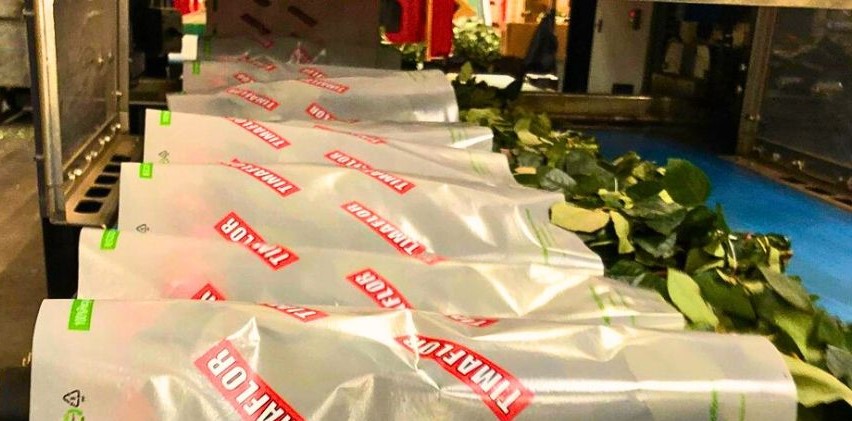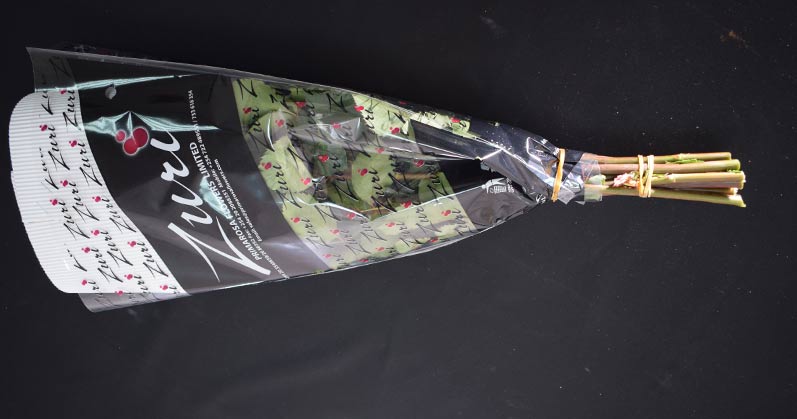

As the demand for packaging that combines sustainability, efficiency, and shelf appeal grows, sleeves have become a practical alternative for fresh produce, flowers, and other goods. More than just a tool for bundling products, sleeves reduce material use while offering valuable space for branding and product information.
Traditional packaging methods such as shrink film, clear trays, and rubber bands are increasingly being replaced with wide sleeves that serve both functional and promotional purposes. These sleeves cut down on packaging material while becoming the primary information carrier at the point of sale. In some cases, a thin rubber band may still be used to hold bundles together, but the sleeve takes center stage for displaying origin details, logos, care instructions, and marketing messages.This flexible packaging method works well for flowers, vegetables, fruits, and other consumer goods, offering consistency and adaptability across different product types.
Customizable and Efficient
Sleeves can be made from either paper or film and are often fully pre-printed with branding, product origin, or advertising messages. Variable data such as EAN codes, batch numbers, or best-before dates can be added during the packaging process using thermal transfer printing, making it easy to tailor information for specific markets or product batches.
Modern sleeving machines are capable of handling up to 30 cycles per minute, offering a major efficiency boost over manual packaging, especially during peak seasons. These systems adjust smoothly to varying product sizes, ensuring the sleeve fits snugly enough to hold products together without causing damage. Most machines can also be integrated into existing packaging lines with ease, and their low-maintenance, energy-efficient design keeps operations running reliably.
Paper-Based Innovations
An important innovation in sleeving technology is the introduction of fully recyclable, paper-based sleeves. These sleeves are sealed using ultrasonic or heat-sealing technology and are made from virgin fibers or more than 50% recycled content. Approved for direct food and floral contact, they can be fully recycled within the paper cycle. Thanks to advancements like water-based coatings, a wide range of suitable papers can now be processed into eco-friendly sleeves.
